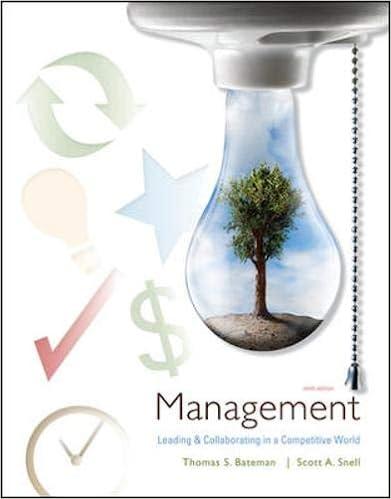Cisco CEO John Chambers admits it took him a few months to trust his new idea about
Question:
Cisco CEO John Chambers admits it took him a few months to trust his new idea about collaboration—an arrangement that he calls “leading from the middle.” He began to feel more comfortable however, when he discovered that not only were teams coming to good conclusions on their own but they also were reaching decisions more quickly. Today, the company is juggling nearly two dozen large business initiatives; in the past it could handle only one or two simultaneously. Projects that once took six months to complete now get done in a week. With the new teamwork structure, Cisco employees kicked off 26 new businesses in a single year; the new businesses are expected to deliver one-fourth of the firm’s revenue in the next five years. A recent team innovation, Stadium Vision, enables stadium owners to broadcast video and digital content—even targeted advertising—to a stadium audience. Already sold to the Arizona Cardinals and Dallas Cowboys football teams and Major League Baseball’s New York Yankees, Stadium Vision represents a multimillion-dollar business for Cisco. Its teams developed the product from initial concept through completion in a mere 120 days. Cisco sees video as the next big thing on the Internet, and it completed a number of acquisitions to boost its video-technology capability. In 2006, it introduced TelePresence, a $300,000 high-definition videoconferencing system that permits corporate clients to hold virtual meetings efficiently. Besides the high-quality resolution, TelePresence offers real-time translation: a speaker’s words are translated into English and transmitted via computerized voice and in subtitles on the screen. Currently, translation is available in Spanish, French, Italian, and Chinese, with plans for up to 20 languages eventually. The company’s fastest-growing product, TelePresence is used for Cisco’s own meetings, allowing the company to trim 20 percent off its corporate travel budget in its first year alone— a saving of nearly $68 million. Additional savings are projected for future years. As Chambers points out, TelePresence helps companies become more efficient (employees don’t lose time in transit) and reduces their consumption of fossil fuels for business travel. And less travel means lower greenhouse gas emissions.
• Why do you think Cisco operates more efficiently in its new collaborative-team structure than it did under the old “command and control” format?
• Consider the role that virtual teams play at Cisco. How has the use of technology fostered teamwork and company success?
Step by Step Answer:

Management Leading And Collaborating In The Competitive World
ISBN: 9780078137242
9th Edition
Authors: Thomas Bateman, Scott Snell





